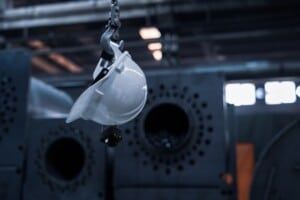5 Important Ways To Ensure Employee Safety

How safe are your company employees? It’s a question worth asking as you could face the consequences of legal claims, negative media mentions, and a bad reputation if an accident happens within your workplace.
Of course, you don’t only have to consider the consequences to your business. If an employee is injured, there could be dire consequences for them and their families.
So, how can you improve employee safety? The following should be advised.
#1: Run a greener business
A greener business is good for your reputation and your profits and it’s also good for your employees. If you can reduce the number of toxic contaminants in your workplace, you will protect the health of the people who work for you. As such, consider the benefits of green cleaning to improve indoor air quality and take further measures to create an environmentally friendly business.
#2: Follow industry guidelines
No matter what type of industry you are in, there will be health and safety guidelines. It’s your responsibility to find out what these are and then apply them to your business. Manufacturing businesses will need to consider the rules that apply to personal safety equipment, for example, and office-based businesses will need to consider guidelines related to eye safety for computer users.
#3: Risk assess with the help of experts
There will be some aspects of your business that you can risk assess yourself. However, you may need to bring in safety consultants if there is anything that you aren’t able to handle alone. Businesses that use electrical equipment, for example, especially in areas where electrical arcs are a danger, should enlist specialists in hazardous area classification . Consider the people that can serve your business, bring them in, and then follow the safety measures they advise.
To help protect your employees, you should look at installing a safety laser sensor around both mobile and stationary equipment. That way, you reduce and mitigate the risk within your workplace.
#4: Maintain equipment and machinery
Despite the expense, you will need to maintain any piece of equipment or machinery that is faulty. You should also pre-empt any faults by carrying out the appropriate tests at regular intervals. In many cases, your employees will be the people who notice any equipment problems before you do, so encourage them to report any faults and then take the appropriate action.
#5: Carry out spot checks
To ensure the safety of your employees, you should periodically walk around your workplace to make sure everybody is behaving sensibly. You could also ask a supervising manager to do the same. However, the responsibility should also fall to a highly trained health and safety inspector, be that somebody from within your business or from an outside agency. They will look for any breaches to rules and regulations and will advise you accordingly to reduce the risk to your business and your employees.
Finally
A safe employee is both a happy employee and a well employee.
To protect all of their needs within your workplace, make sure safety is a priority. When you do, productivity will rise, your business will make more of a profit and you won’t run the risk of anything that could hinder the future of your business.


